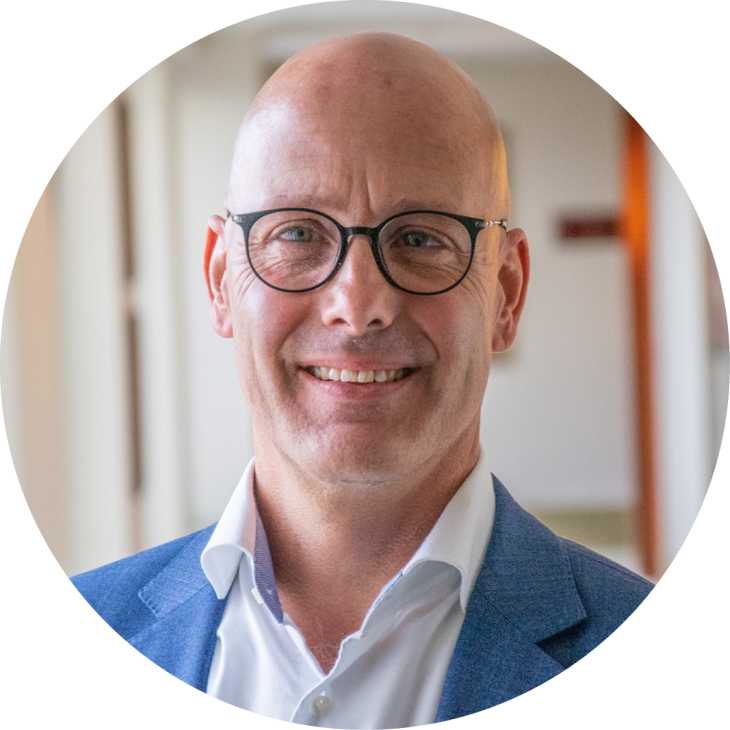Interview
Dr. Peter Visser - AkzoNobel

As Innovation Project Lead at AkzoNobel, the global industry leader in paints and coatings, can you tell us more about your work at AkzoNobel?
I joined AkzoNobel Aerospace Coatings in 1997, having built up a strong background in organic chemistry. Within the global product development group, I was responsible for the development of several high solids primers and topcoats for the aerospace industry.
In 2007, I shifted my focus and started working on chromate-free primer technology for the protection of high-strength aluminum alloys. In this role, I was able to immerse myself in the area of active corrosion protection by searching, assessing and developing new chromate-free coating technologies. During this period, I also managed to obtain my PhD degree for research on “Active corrosion protection of aerospace aluminum alloys by lithium-leaching coatings.”
In my current role, as an expert in active corrosion protection, my job is to try and make the connection between science and the business of product development.
In your opinion, what are the biggest challenges facing research in coatings materials in the coming years?
There are many challenges ahead in the field of active protective coatings. Most of these challenges involve making our products more sustainable and longer lasting. We need to develop products with a lower carbon footprint, which are free from harmful ingredients and increase the use of renewable and recycled materials, while making sure that the products protect surfaces longer.
AkzoNobel is a consortium member of the EU-funded VIPCOAT project. VIPCOAT is working on an open innovation platform to support engineers in the development of coating materials and the creation of accelerated life test scenarios to assess their durability. What motivated AkzoNobel to become a VIPCOAT partner?
Collaborating with customers, start-ups, suppliers, academia and other stakeholders is fundamental to what we want to achieve as a company. Many challenges can’t be solved through the coating alone, but need to be addressed by the whole supply chain. VIPCOAT provides us with the opportunity to work with a range of experts to push boundaries in the development of active protective coatings. In this project, we’re developing models that can potentially accelerate the development process of active protective coatings – which is essential, considering the challenges we’re facing.
In autumn 2022, VIPCOAT reached its first milestone when a prototype of the platform went online. What other milestones do you expect in the next two years?
The platform is only one aspect. Personally, I’m looking forward to the implementation of the different apps that are being developed – one uses machine learning technology to find new corrosion inhibitors. There’s also an app that simulates the release of a corrosion inhibitor from a coating matrix; another simulates corrosion and inhibition in a defect and finally, there’s a model that can simulate behavior under changing environmental conditions.
Has VIPCOAT led to new developments that AkzoNobel wants to explore further after the end of the project?
Understanding how corrosion inhibitors are released from a coating matrix to provide active corrosion protection is one of the important pillars of the project. We’ve been able to perform measurements at the DESY Synchrotron facility to collect 3D data of the coating microstructure (pigment distribution) and monitor how the coating microstructure is changing, due to the release of the corrosion inhibitors. These measurements provide us with new insights into how active protective coatings behave. This knowledge is essential in order to develop the geometric and physical models to simulate the release of corrosion inhibitors from the coating matrix and provide a new tool for product development.
What strategic advice would you offer for the next steps?
It’s all about collaboration and collectively pushing boundaries. We need to find innovative ways to make a contribution to the change that’s needed to safeguard our world beyond tomorrow. VIPCOAT is a very challenging and ambitious project. We’re confident that working together with our partners will be the next step in accelerating the development of active protective coatings.
Interview & Photo: Hereon/ Lisa Depenbrock